Irish artists had a strong presence at the Art and Geography Conference I attended last week in Lyon. Ríonach Ní Néill and Joe Lee, Christine Mackey, Michelle Browne, Olwen Fouéré and Andrew Duggan all made strong presentations of work and reflections on practice in a way that has encouraged me as I embark on bringing my own work into this academic arena. The conference was an opportunity for me to recognise connections between many strands of my own practice and that of my peers in artistic and academic disciplines. Ríonach presented a new film, Area, that she’s made with Joe Lee. It’s a beautiful film filled with stories, arresting images, eloquent dancing from many different kinds of bodies and no small amount of love. I recognised in it many of the Macushla dancers with whom, through Ríonach, I have had an opportunity of working but I also recognised the Docklands’ streets where much of the film is set and where my own bodies and buildings research started when I was Artist in Residence for Dublin City Council. I saw kinship between Robert Jackson’s clambering across the top of a wall and Matthew’s delicate burbling dance on the top of a wall in Three+1 for now. In Ríonach’s work, however, there is an extended history in her engagement with the city and with the dancers in her film whose ages range from under 10 to over 60. Nonetheless I was particularly struck by the moments of solo poetry that punctuate the social group scenes: a simple shot of Ríonach balancing on some chairs or Robert Jackson performing a dynamic unfolding solo that travels through the city. These moments are particularly effective because of the context of unlikely celebratory community in which they are places.
Ríonach and Joe’s film resonated with me as I was presenting for the conference the Bodies and Buildings films I’ve assembled from the research since 2007. I offered the loop of films to the conference and also agreed to speak about them among the other artistic and academic presentations in the programme. The films were supposed to be played between sessions, inserted appropriately in the niches of the schedule but technical challenges prevented that happening, which reminds me that existing in the niche is a precarious position from which it is easy to be displaced. The films did have a home in the Musée des Moulages where I found myself dancing on the Bird’s Nest building site in Beijing on a tv screen surrounded by plaster models of classical statues.

The odd backdrop reminded me that the material I was dancing in the film had come from the Cosán Dearg solo and that I had noted the classical sculptures in Berlin’s Pergamon Museum when I was making the piece. The connection with outmoded warriors relates also to the inspiration of Iarla’s music for version of the material I did in Idir: “Oisín! Is fada do shuan” “Oisín, you’ve slept a long time”. Iarla was inspired by the notion of the Celtic hero Oisín waking from his long slumber to find the era of heroes had passed. He woke to loss. He had survived but belonged to another age. It was curious to be reminded of all these resonances in the work, as I watched it in this new setting in Lyon.
The experience of the conference wasn’t just about memories of old work. It also helped me engage with current projects, in particular the E-motional Bodies and Cities experience. The cartographic concerns of geographers and artists connected strongly with the e-motional mapping of space, place and relationships. A Swedish academic and landscape architect, Carola Wingren, made a presentation about how she was trying to communicate the threat of rising sea levels in Sweden in a way that would be easier for people to engage with. She spoke of the shortcoming of maps that suggested the line between land and sea was fixed and had experimented with different kinds of map-making that would better represent the dynamic nature of the shifting shoreline. Her drawings recalled Nicolas Santos’ drawings of our E-motional mapping in Limassol.
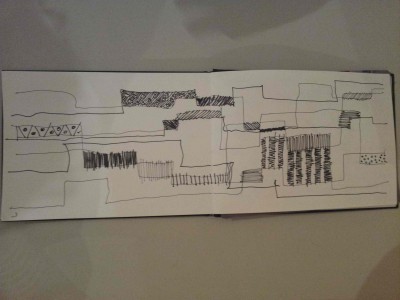
I was frustrated at one presentation where a geographer suggested that artists had not contributed anything new to cartography. Of course if one already defines what map-making looks like (pictorial representation often linear on paper/screen, terrain viewed from above) and only recognises artistic engagements that follow that mode then one sees nothing new. But if one were prepared to recognise that maps are affective and not just technical, that (as Karen Till pointed out in her presentation) spaces are filled with memory, actuality and fantasised futures (and multiple versions within each of those categories), then it becomes necessary to recognise that maps might exist in and between bodies in the way that we have begun to articulate in the E-motional Bodies and Cities work. Of course this kind of multivalent map is not neat. It is exists synchronically and diachronically. It is contested. But that is why the mobile response of e-motional mapping is makes sense. Such mapping also acknowledges the impact of the mapper on the mapping, since our E-motional journeys not only record the environment but intervene in it.
In contrast to this academically limited view of artists, Karen Till’s presentation of her engagement with the work of Colombian theatre group Mapa Teatro was inspiring and reassuring to me as an artist who is going to be entering this academic terrain. It’s largely thanks to Karen and the Mapping Spectral Traces research group she co-convenes that Ireland has such a strong artistic presence at the conference. She spoke of the benefit for academics in paying sensitive attention to the work of artists in the field, not looking for examples to prove pre-existing theory but allowing theory to grow out of that sensitive attention. For Karen, the academic becomes an important conduit for knowledge developed from experience and embodiment to influence the policy makers who pay attention to the academic’s insights.
From my point of view, it is precisely this potential to influence that makes it attractive for me as an artist to engage with academia. I am soon to start a PhD and have been anxious about what impact that would have on my work as a choreographer. However the conference has also provided me with opportunities to talk about trusting my practice as a research method and so I can look forward to the academic adventure ahead as a way of deepening the practice and communicating its value.
“After all one’s art is not the chief end of life but an accident in one’s search for reality or rather perhaps one’s method of search” W.B. Yeats

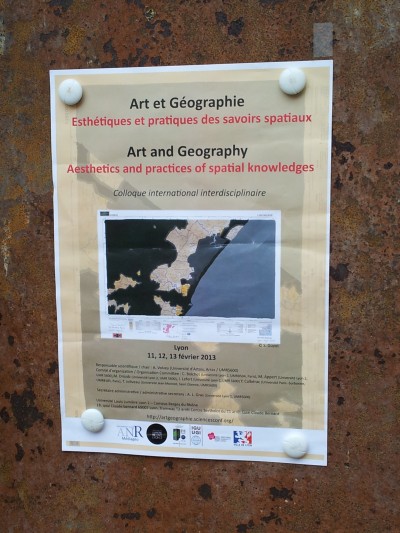
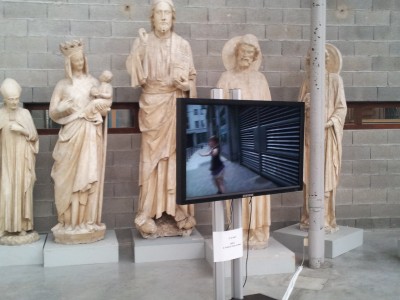
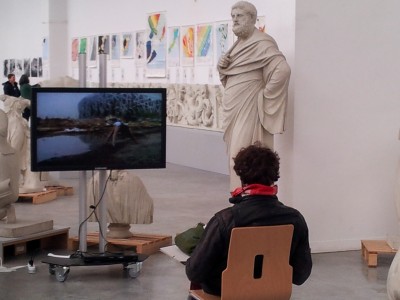
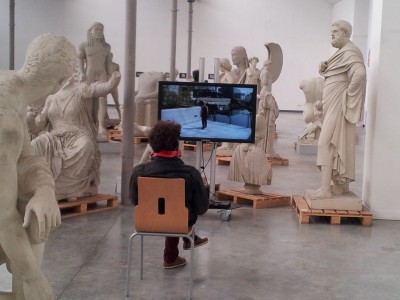

Post a Comment